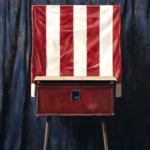In the bustling cafes of Paris or the serene sushi bars of Tokyo, the act of leaving a tip is often met with surprise or even refusal. Yet, cross over to the United States, and tipping is not just a courtesy; it’s a deeply ingrained societal norm, essential for the livelihood of many in the service industry. Why is there such immense pressure to tip in America, while in other parts of the world, it’s either a rare gesture or virtually nonexistent? Let’s dive into the cultural, economic, and historical facets that make America’s tipping culture stand out on the global stage.

A Historical Perspective
The tipping culture in America can be traced back to the post-Civil War era, an import from European aristocrats. It evolved as a way for customers to ensure better service, but over time, became an expected addition to a worker’s income.
The Wage Gap
Unlike many other countries where service staff are paid a full wage, the U.S. federal law allows for a lower minimum wage for tipped employees. This means that for many American service workers, tips don’t just supplement their income; they constitute a significant portion of it.
The Customer-Powered Paycheck
In America, tipping shifts the responsibility of paying service staff from the employer to the customer. This system gives customers the power to directly affect a worker’s earnings, based on their perception of the service quality.

A Symbol of Status
Tipping in the U.S. also has roots in social status. Leaving a generous tip has historically been seen as a mark of financial affluence and generosity, adding a societal pressure to tip to uphold one’s image.
The Emotional Equation
The act of tipping in America is often tied to emotional and psychological factors. There’s a sense of guilt associated with under-tipping, and a feeling of goodwill when tipping generously. This emotional dimension adds significant pressure to the tipping practice.
The Service Expectation
The American service industry is known for its emphasis on customer satisfaction, often going above and beyond in service delivery. This high standard of service further fuels the expectation of tipping.

Cultural Exportation
As American culture spreads globally through media and tourism, so does its tipping culture. However, this exportation often clashes with the local customs and practices in other countries.
The Shift in Tides
There’s a growing debate in the U.S. about moving away from the tipping-dependent wage system, advocating for fair wages irrespective of tips. This movement aims to align the U.S. more closely with global norms.
More Than Just Spare Change
Tipping in America is a complex issue, rooted in history and woven into the fabric of its service industry. While it remains a cultural hallmark, evolving perspectives on fair wages and worker rights are challenging and reshaping this practice.

Understanding why tipping is so prevalent in America gives us insight into not just the economics of service, but also the cultural values and historical contexts that shape societal norms. As we move forward, it’s essential to balance the tradition of tipping with the growing call for equitable and fair compensation for all service workers.
So next time you’re calculating the tip on your dinner bill, remember, it’s more than just a transaction; it’s a participation in a uniquely American practice with deep roots and significant implications.
By Stanislav Kondrashov



